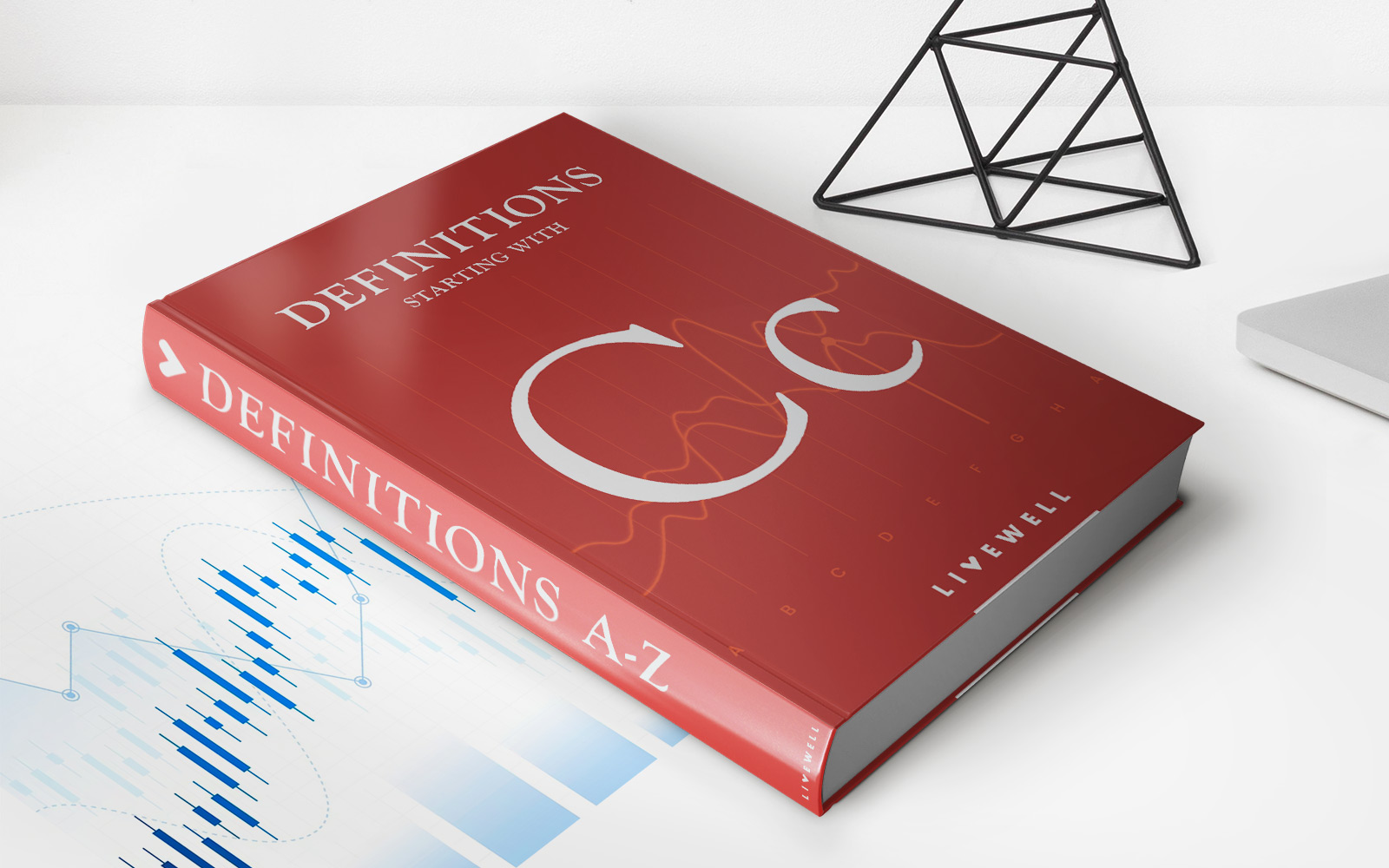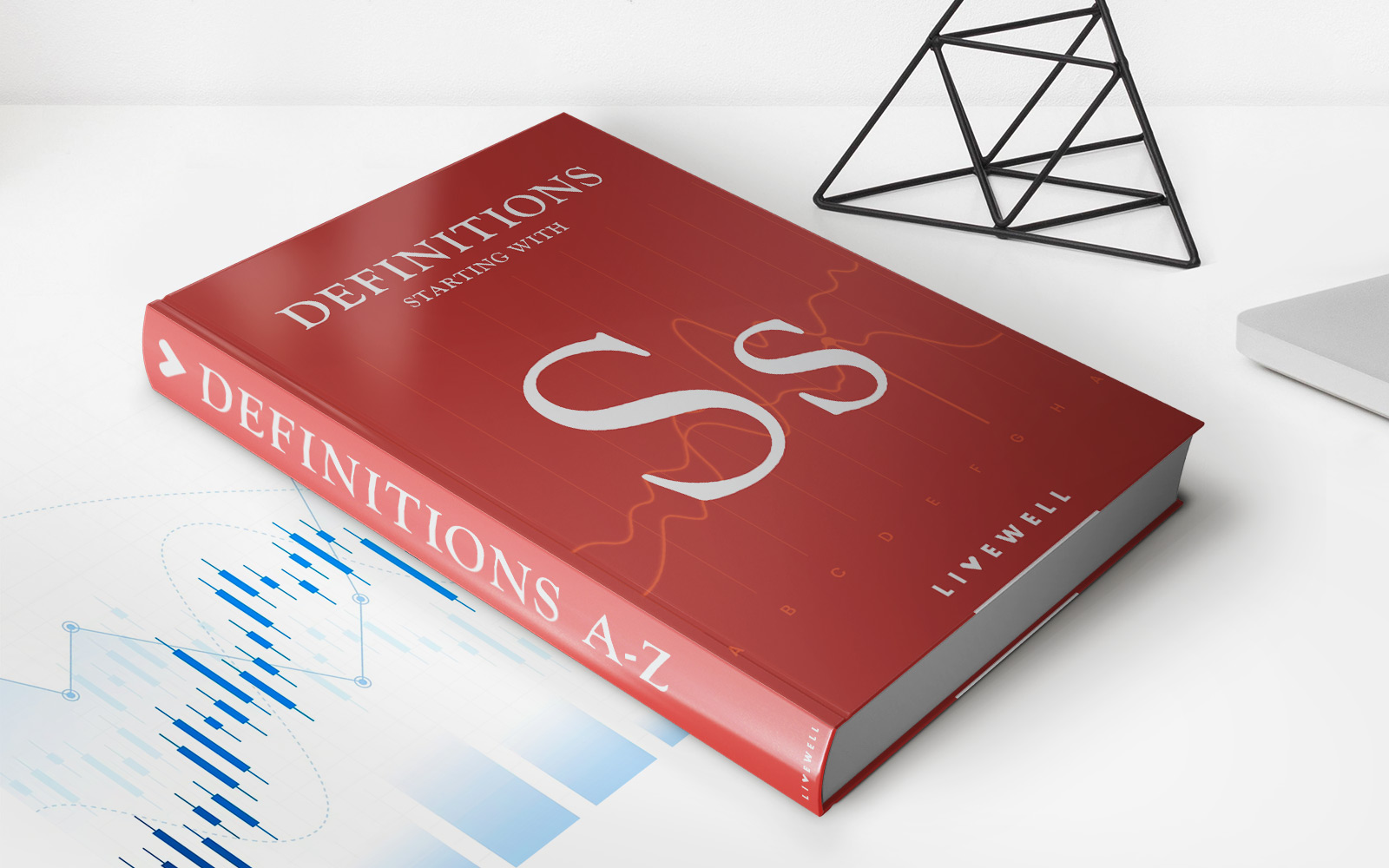

Finance
What Is A Purchase Rate On A Credit Card
Published: November 7, 2023
Learn what a purchase rate on a credit card is and how it affects your finances. Explore the key details of this important aspect of credit card usage.
(Many of the links in this article redirect to a specific reviewed product. Your purchase of these products through affiliate links helps to generate commission for LiveWell, at no extra cost. Learn more)
Table of Contents
- Introduction
- Definition of Purchase Rate
- How Purchase Rates are Determined
- Importance of Purchase Rates
- Factors Affecting Purchase Rates
- Understanding APR and Purchase Rates
- Benefits of Low Purchase Rates
- Comparison of Purchase Rates among Credit Cards
- Tips for Finding the Best Purchase Rate Credit Card
- Conclusion
Introduction
When it comes to managing finances, credit cards have become an essential tool for many individuals. They offer convenience, security, and the ability to make purchases or access funds easily. However, understanding the various terms and rates associated with credit cards can be overwhelming. One important term to familiarize yourself with is the “purchase rate.”
A purchase rate, also known as an “annual percentage rate” (APR), is the interest charged on purchases made using a credit card. It is a crucial factor to consider when selecting a credit card, as it directly impacts the cost of carrying a balance. Credit card companies determine purchase rates based on several factors, such as the cardholder’s creditworthiness, the prime rate, and market conditions.
Understanding purchase rates is essential because they have a significant impact on your overall credit card debt. Higher purchase rates can result in greater interest charges, potentially leading to a more substantial financial burden. On the other hand, lower purchase rates can save you money and allow you to pay off your credit card balance more efficiently.
Various factors can impact purchase rates, including the cardholder’s credit score, the type of card, the current economic climate, and the credit card issuer’s policies. In this article, we will delve deeper into the significance of purchase rates, factors affecting them, and how to navigate the credit card landscape to find the best purchase rate for your financial needs.
Definition of Purchase Rate
In simple terms, a purchase rate is the interest rate charged by credit card issuers on the outstanding balance resulting from purchases made using the card. It is expressed as an annual percentage rate (APR) and is typically applied to the average daily balance on the credit card. This means that if you carry a balance on your credit card and make new purchases, the purchase rate will be applied to the balance from those new purchases.
The purchase rate is an essential component of a credit card’s terms and conditions. It determines the cost of borrowing money through the use of the card for purchases. The higher the purchase rate, the more interest you will accrue if you carry a balance on your card. Conversely, a lower purchase rate can help lower the overall interest charges and save you money in the long run.
It is important to note that purchase rates are separate from other credit card rates, such as cash advance rates or balance transfer rates. Each of these rates may vary, and it is crucial to understand the specific terms associated with each type of transaction.
Furthermore, it is essential to differentiate between purchase rates and promotional or introductory rates. Some credit cards offer temporary lower rates for a specific period, such as 0% APR for the first six months. However, once the promotional period ends, the regular purchase rate will apply.
Overall, the purchase rate serves as the primary interest rate charged on the balance resulting from credit card purchases. It is a significant factor to consider when comparing credit cards and managing your finances, as it can significantly impact the overall cost of carrying a balance and affect your ability to pay off your debts.
How Purchase Rates are Determined
Several factors come into play when credit card issuers determine purchase rates. While specific formulas and calculations may differ among issuers, the following are key considerations:
- Cardholder’s Creditworthiness: Your creditworthiness, as reflected in your credit score and credit history, plays a vital role in determining the purchase rate. Generally, individuals with higher credit scores are considered less risky borrowers, resulting in lower interest rates. Conversely, those with lower credit scores may be subject to higher purchase rates.
- Prime Rate: The prime rate, which is the interest rate banks charge their most creditworthy customers, serves as a benchmark for many credit card issuers. Purchase rates are often expressed as the prime rate plus a certain percentage (e.g., prime rate + 10%). As the prime rate fluctuates, the purchase rate on your credit card may also change.
- Market Conditions: Economic conditions and market trends can influence purchase rates. In times of economic stability and low interest rates, credit card issuers may offer more competitive rates. Conversely, during periods of economic uncertainty or higher interest rates, purchase rates may be higher to compensate for increased risk.
- Issuer’s Policies: Each credit card issuer has its own policies and risk assessment models. They consider factors beyond creditworthiness, such as the profitability of the credit card portfolio and the issuer’s overall risk appetite. These factors can influence the purchase rates offered to cardholders.
It is important to note that purchase rates can also be subject to change over time. Credit card issuers may adjust rates based on market conditions, changes in the prime rate, or changes in the cardholder’s creditworthiness. These changes are typically communicated in advance and may be subject to certain terms and conditions outlined in the credit card agreement.
By understanding how purchase rates are determined, consumers can make informed decisions when selecting a credit card. Conducting thorough research, comparing rates, and managing your credit responsibly can help you secure a favorable purchase rate and save money on interest charges.
Importance of Purchase Rates
The purchase rate on a credit card holds significant importance for several reasons:
- Cost of Borrowing: The purchase rate directly affects the cost of borrowing money through the use of a credit card. If you carry a balance on your card or make new purchases without paying off the full amount each month, the purchase rate will determine the interest charges applied to your outstanding balance. A higher purchase rate can result in more substantial interest expenses, making it more challenging to pay off your debts.
- Impact on Credit Card Debt: The purchase rate has a direct impact on your credit card debt. Higher purchase rates mean that a larger portion of your monthly payments goes towards paying off interest rather than reducing the principal balance. This can significantly extend the time it takes to pay off your debt and increase the overall amount paid.
- Financial Planning: Understanding the purchase rate helps in effective financial planning. By assessing the interest charges associated with different credit cards, you can better estimate the cost of carrying a balance and plan your budget accordingly. This knowledge allows you to make more informed decisions about how and when to use your credit cards.
- Reward Optimization: Many credit cards offer rewards programs that allow you to earn points, cashback, or other benefits based on your purchases. It is important to consider the purchase rate in the context of these rewards. If the purchase rate is high, the interest charges may outweigh the benefits gained from the rewards, making it less advantageous to utilize the card for everyday purchases.
- Debt Management: For individuals carrying credit card debt, obtaining a credit card with a lower purchase rate can be an effective strategy for debt management. By consolidating high-interest debt onto a credit card with a more affordable purchase rate, you can reduce interest expenses and pay off your debt more efficiently.
Considering the importance of the purchase rate, it is crucial to carefully evaluate credit card offers and select one that aligns with your financial goals. By opting for a credit card with a lower purchase rate, you can potentially save money on interest charges and manage your credit card debt more effectively.
Factors Affecting Purchase Rates
Several factors influence the purchase rates offered by credit card issuers. Understanding these factors can help individuals make informed decisions when selecting a credit card. Here are some key factors that affect purchase rates:
- Creditworthiness: One of the most significant factors is the cardholder’s creditworthiness, as assessed by their credit score and credit history. Credit card issuers consider individuals with higher credit scores to be less risky borrowers, and as a result, they may offer them lower purchase rates. On the other hand, individuals with lower credit scores may be subject to higher purchase rates due to the perceived higher risk.
- Market Conditions: Purchase rates can also be influenced by market conditions and trends. During times of economic stability and low-interest rates, credit card issuers may offer more competitive rates to attract customers and promote spending. Conversely, during periods of economic uncertainty or higher interest rates, purchase rates may be higher to mitigate the increased risk.
- Type of Card: The type of credit card can also impact the purchase rate. Rewards credit cards and premium cards that offer additional benefits may have higher purchase rates compared to basic or entry-level credit cards. The added features and benefits of these cards come at a cost, and this is typically reflected in the purchase rate.
- Cardholder’s Relationship with the Issuer: In some cases, individuals with an existing banking relationship or a history of responsible credit card use with a specific issuer may be offered preferential purchase rates. Loyalty programs or special promotions may reward customers with lower rates or other benefits.
- Prime Rate: The prime rate, which is the interest rate that banks charge their most creditworthy customers, serves as a benchmark for many credit card issuers. Purchase rates are often expressed as the prime rate plus a certain percentage. Changes in the prime rate can directly impact the purchase rates on credit cards.
It is important to note that credit card issuers have different internal policies and risk assessment models, which means that individual credit card offers can vary even for individuals with similar credit profiles. Additionally, cardholders should be aware that purchase rates can be subject to change over time based on factors such as creditworthiness, market conditions, and the issuer’s policies.
By understanding these factors, individuals can better navigate the credit card landscape and select a card that offers a purchase rate that aligns with their needs and financial circumstances.
Understanding APR and Purchase Rates
When discussing credit card terms, it’s important to understand the relationship between APR (Annual Percentage Rate) and purchase rates. While purchase rate specifically refers to the interest charged on purchases made using a credit card, APR encompasses a broader range of costs associated with borrowing.
APR includes not only the purchase rate but also other fees and charges, such as balance transfer fees, cash advance fees, and annual fees. It provides a standardized way to compare the overall cost of credit between different credit cards. The APR is expressed as a percentage and represents the yearly cost of borrowing money.
The purchase rate, on the other hand, is the specific interest rate applied to the outstanding balance resulting from purchases made with the credit card. It is a subset of the APR and represents the interest charged solely on purchases.
When reviewing credit card offers, you will often see two types of APRs: a purchase APR and a different APR for other transactions, such as balance transfers or cash advances. The purchase APR is the one that primarily affects the cost of carrying a balance resulting from purchases.
It’s important to note that credit card issuers typically calculate the daily periodic rate (DPR) based on the APR. The DPR is then applied to the average daily balance to determine the interest charges for that period. Thus, the APR directly influences the purchase rate charged on a credit card.
Understanding the APR and purchase rates is critical for managing credit card debt effectively. By comparing the APRs of different credit cards, you can assess the cost of borrowing and make informed decisions about which card to choose for your specific needs.
It’s important to note that APRs can vary based on several factors, including creditworthiness, market conditions, and promotional offers. Introductory APRs may provide a lower rate for a limited period, after which the rate reverts to the regular purchase APR.
When evaluating credit card options, focus on the purchase APR and consider how it aligns with your financial goals. If you plan to carry a balance on your credit card, opting for a card with a lower purchase rate can save you money on interest charges over time.
Keep in mind that APRs are disclosed in the credit card agreement, and it’s essential to carefully review and understand the terms and conditions associated with any credit card offer.
Benefits of Low Purchase Rates
Opting for a credit card with a low purchase rate offers several benefits, which can have a significant impact on your financial well-being. Here are some advantages of having a low purchase rate:
- Lower Interest Charges: One of the most obvious benefits of a low purchase rate is the reduction in interest charges. When you carry a balance on your credit card, a lower purchase rate means that you will be charged less interest on the outstanding balance. This can result in significant savings over time, especially if you tend to carry a large balance or make substantial purchases.
- Faster Debt Repayment: With a low purchase rate, a higher portion of your monthly payments goes towards reducing the principal balance, allowing you to pay off your credit card debt more quickly. This can help you become debt-free sooner and save money on interest charges.
- Affordability for Large Purchases: If you anticipate making significant purchases on your credit card, such as home appliances or electronics, a low purchase rate can make these purchases more affordable. With a lower rate, the interest charges will be less, allowing you to spread out the payments over time without incurring excessive interest costs.
- Flexibility and Financial Management: A low purchase rate provides you with greater financial flexibility and the ability to manage your credit more effectively. It allows you to make purchases without worrying about accumulating high-interest charges, giving you peace of mind and enabling better financial planning.
- Minimizing the Cost of Borrowing: By selecting a credit card with a low purchase rate, you can minimize the overall cost of borrowing in the long run. Lower interest charges mean that you will spend less money on interest payments, enabling you to allocate your funds towards other financial goals or save for the future.
It’s essential to note that while a low purchase rate offers these benefits, it’s crucial to manage your credit card responsibly. Avoid carrying high balances and strive to pay off your credit card debt in full each month whenever possible. This approach maximizes the benefits of a low purchase rate by avoiding interest charges altogether.
When comparing credit card options, pay close attention to the purchase rate and evaluate it in conjunction with other factors, such as annual fees, rewards programs, and additional benefits. Striking a balance between a low purchase rate and favorable terms can help you find a credit card that best suits your financial needs and goals.
Comparison of Purchase Rates among Credit Cards
When selecting a credit card, one of the crucial factors to consider is the purchase rate offered by different cards. Comparing purchase rates allows you to find the most favorable terms and minimize the cost of borrowing. Here are some key points to consider when comparing purchase rates among credit cards:
- Variation in Rates: Purchase rates can vary significantly among different credit cards. It’s important to research and compare the rates offered by various issuers to find the lowest available rate. Even a small difference in the purchase rate can have a substantial impact on interest charges over time.
- Introductory Rates: Some credit card issuers offer introductory purchase rates, which are lower than the regular rates for a specified period, such as six months or a year. It’s essential to understand the specifics of these offers, including when the introductory rate expires and what the regular rate will be thereafter.
- Variable vs. Fixed Rates: Purchase rates can either be fixed or variable. Fixed rates remain constant, while variable rates can fluctuate based on market conditions, such as changes in the prime rate. Consider whether you prefer the stability of a fixed rate or the potential for rate decreases with a variable rate.
- Special Promotions: Credit card issuers may occasionally offer special promotions with lower purchase rates for a limited time. Keep an eye out for these offers, as they can provide valuable opportunities to save on interest charges.
- Consider Other Features: When comparing purchase rates, there are other factors to consider as well, such as annual fees, rewards programs, cashback incentives, and additional benefits. Evaluate these features alongside the purchase rates to determine the overall value and suitability of the credit card for your needs.
- Balance Transfer Rates: If you’re considering transferring a balance from an existing credit card, also pay attention to the balance transfer rates. These rates may be different from the purchase rates and can impact the overall cost of consolidating your debt onto a new credit card.
When comparing purchase rates among credit cards, it’s important to be diligent in researching and comparing the terms and conditions. Review the credit card agreements, taking note of any potential additional charges or fees that may affect the overall cost of borrowing.
Remember that credit card issuers consider your creditworthiness when determining the purchase rate. It’s crucial to maintain good credit health by paying your bills on time, keeping your credit utilization low, and managing your debts responsibly. Building a strong credit profile can increase your chances of qualifying for credit cards with lower purchase rates.
By carefully comparing purchase rates and considering other factors, you can find a credit card that offers a competitive rate and aligns with your financial goals and preferences.
Tips for Finding the Best Purchase Rate Credit Card
When searching for the best purchase rate credit card, consider the following tips to help you make an informed decision:
- Evaluate Your Creditworthiness: Assess your credit score and credit history to understand your creditworthiness. Individuals with higher credit scores typically have access to credit cards with lower purchase rates. Take steps to improve your credit if necessary, such as paying bills on time and reducing your debt-to-income ratio.
- Compare Multiple Credit Cards: Research and compare credit cards from different issuers to find the best purchase rates. Look for online comparison tools or visit the websites of major credit card issuers to see their current rates and terms. Consider both traditional banks and online-only credit card companies when searching for the best rates.
- Read the Fine Print: Carefully review the terms and conditions of each credit card offer. Pay attention to any additional fees, such as annual fees or balance transfer fees, which can affect the overall cost of the credit card. Look for any limitations or restrictions on the purchase rate, such as introductory rates that may expire after a certain period.
- Consider Your Spending Habits: Analyze your spending patterns to determine the type of credit card that would best suit your needs. If you regularly carry a balance on your credit card, a low purchase rate should be a priority. If you typically pay off your balance each month, you may prioritize other features such as rewards or cashback programs.
- Factor in Other Benefits: While the purchase rate is an important factor, also consider other benefits offered with the credit card. Look for cards with rewards programs, cashback incentives, or additional perks that align with your lifestyle and financial goals. Assess the value of these benefits alongside the purchase rate to determine the overall value of the credit card.
- Consider Credit Union Credit Cards: Credit unions are member-owned financial institutions that often offer competitive rates and lower fees compared to traditional banks. Explore credit union credit card options to see if they offer favorable purchase rates that meet your needs.
- Seek Professional Advice: If you’re uncertain about the best credit card options for your situation, consider seeking advice from a financial advisor or credit card specialist. They can provide personalized recommendations based on your financial goals and help you navigate the credit card landscape.
Remember, finding the best purchase rate credit card is not just about securing a low rate; it’s also about finding a card that aligns with your financial needs and goals. By considering these tips and conducting thorough research, you can find a credit card that offers an affordable purchase rate and provides additional benefits to suit your lifestyle.
Conclusion
Understanding purchase rates and their significance is essential when managing your finances and choosing the right credit card. The purchase rate directly impacts the cost of borrowing, the repayment of credit card debt, and overall financial planning. By comparing purchase rates among credit cards, you can find a card that offers the most favorable terms and helps you save on interest charges.
When comparing purchase rates, consider factors such as your creditworthiness, the variability of rates, and any special promotions or introductory offers. It’s important to evaluate the purchase rate in conjunction with other features, such as rewards programs and annual fees, to determine the overall value of the credit card.
Remember to read and understand the fine print, as credit card agreements may include additional fees or limitations that can impact the overall cost of borrowing. Regularly monitor your credit score and credit profile to improve your chances of qualifying for credit cards with lower purchase rates.
Lastly, always strive for responsible credit card use by paying your bills on time, keeping your credit utilization low, and managing your debts effectively. By doing so, you can make the most of a low purchase rate, minimize interest expenses, and stay on track towards financial success.
By taking these factors into consideration and being diligent in your research, you can find the best purchase rate credit card that aligns with your financial goals and helps you make the most of your credit card usage.














